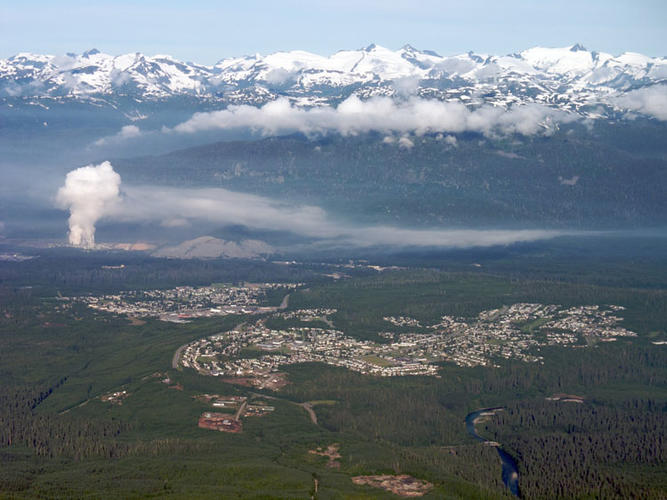Kitimat
Kitimat (54˚03'10" 128˚39'00" Head of Kitimat Arm, S of Terrace), Kitimat Arm (53˚55'00" 128˚42'00" NE extension of Douglas Channel), Kitimat River (54˚00'00" 128˚40'00" Flows S into head of Kitimat Arm). Kitamaat (or Gitamaat) is a Tsimshian name meaning “people of the snow” and refers to the First Nation inhabitants of the Kitimat R valley, which does indeed experience a heavy snowfall. According to anthropologist Jay Powell, the Kitamaat people descend from the legendary Hantlhikwilas, who paddled to this region from Rivers Inlet long ago. He dared to approach the mouth of the Kitimat R, where a monster’s presence had long thwarted human settlement, and discovered that the monster was, in fact, a vast flock of gulls attracted by countless eulachon. The landing, rising and circling of the birds had been mistaken for a huge mouth opening and closing. The newcomers stayed and prospered. White missionaries and settlers arrived in the 1880s and ’90s, and the GTP laid out a townsite about 1906 but then chose Prince Rupert as the western terminus for its railroad instead. The Aluminum Co of Canada selected the mouth of the river as the site for a smelter in 1950, and the modern city of Kitimat arose. It also became home to a pulp and paper mill and a methanol and ammonia plant. The Kitamaat people settled on the NE side of Kitimat Arm and were joined there about 1948 by the Henaaksiala (or Kitlope) people from Gardner Canal. Their village was called Kitamaat (or Kitimat) Mission. The Kitamaat and Henaaksiala groups are now known as the Haisla First Nation, and the official name of their community is Haisla, though it is still regularly referred to as Kitamaat (or Kitimat) Village. The nearby Kitimat Ranges are also named after this First Nation group. E W

